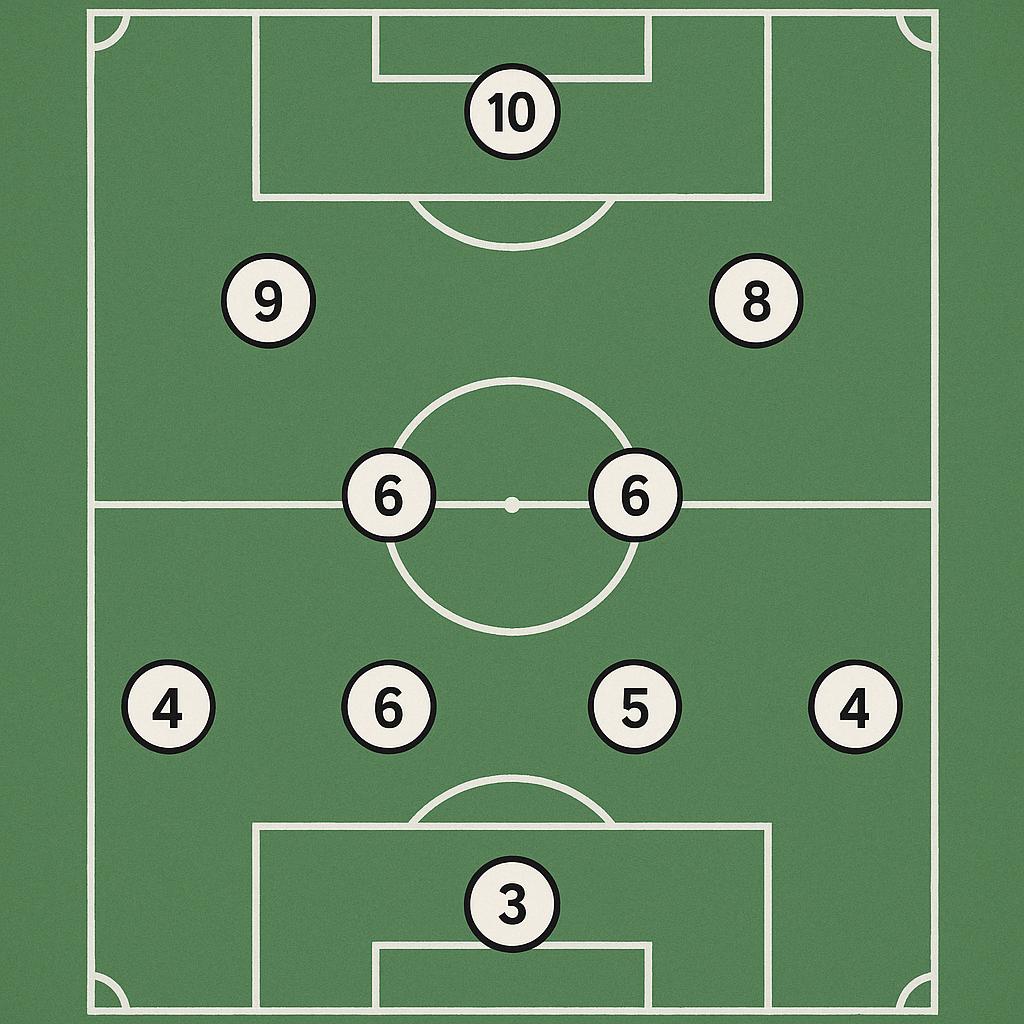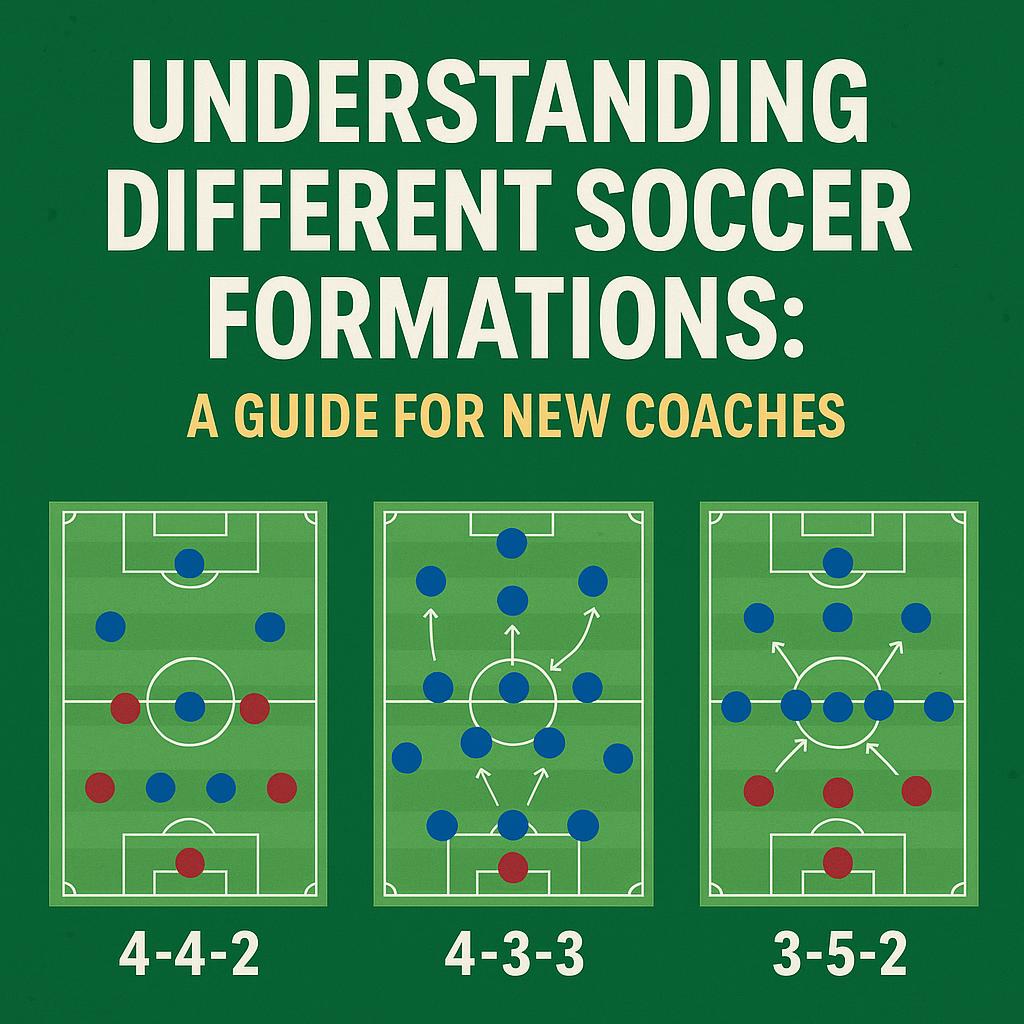Becoming a soccer coach is an exciting journey, filled with opportunities to shape young athletes and build winning teams. One of the most fundamental aspects you will encounter is understanding soccer formations. Think of formations as the blueprint for your team on the field, they dictate where each player is positioned and how they interact, both offensively and defensively. Choosing the right formation can significantly impact your team's performance, allowing you to maximize player strengths and exploit opponent weaknesses. This guide will help new coaches grasp the intricacies of popular tactical setups.
What Exactly Are Formations?
Before we dive into specific setups, let us define what a formation truly means. A soccer formation describes the arrangement of players on the field, excluding the goalkeeper. It is typically represented by a series of numbers, like 4-4-2 or 4-3-3. These numbers indicate the number of defenders, midfielders, and forwards, respectively, from back to front. For example, in a 4-4-2 formation, you have four defenders, four midfielders, and two forwards. This tactical structure provides a starting point, but remember, player movement during a game is dynamic, not static.

The Enduring Classic: 4-4-2 Formation
The 4-4-2 formation is arguably one of the most recognized and widely used formations in soccer history. It is a traditional setup that offers a strong blend of defensive solidity and attacking potential.
Strengths: This formation provides excellent defensive balance. With two lines of four players, it creates a compact block that is difficult for opponents to break down centrally. This defensive solidity often leverages principles similar to zonal marking. It also promotes effective wide play, as wingers and full-backs can combine to create attacking overloads on the flanks. The two strikers offer consistent attacking threat and partnership, making it easier to hold up the ball or play one-two passes. Many successful teams throughout history, from Manchester United in the 1990s to Atlético Madrid more recently, have showcased its reliability and effectiveness.
Weaknesses: One potential drawback is that the 4-4-2 can be outnumbered in central midfield. Against teams employing a three-man midfield, your two central midfielders might struggle to control possession or press effectively. The strikers can also become isolated if the midfield does not push up to support them, leading to a lack of attacking options.
Ideal Scenarios: The 4-4-2 is ideal for teams that prioritize defensive stability and look to hit opponents on the counter-attack. It is also a fantastic formation for developing younger players, as the roles are relatively clear and distinct, fostering teamwork and discipline.
The Attacking Powerhouse: 4-3-3 Formation
The 4-3-3 formation is renowned for its attacking prowess and emphasis on possession-based football. It typically features four defenders, three central midfielders, and three forwards, usually with two wide attackers and a central striker.
Strengths: This formation truly shines in its ability to create attacking width and offer multiple scoring avenues. The three-man midfield, often with one deep-lying playmaker and two box-to-box midfielders, can dominate possession and control the tempo of the game. It allows for an aggressive high press, pushing opponents deep into their half. Consider how Barcelona, under Pep Guardiola, utilized this formation to achieve unprecedented success, playing intricate passing triangles and suffocating opponents with relentless pressure.
Weaknesses: The attacking nature of the 4-3-3 means it can leave the defense vulnerable, especially if the wingers neglect their defensive duties and fail to track back. It also demands highly energetic and skilled midfielders who can cover vast amounts of ground defensively and contribute to the attack. A strong, disciplined defensive midfielder is absolutely crucial to shield the back four.
Ideal Scenarios: The 4-3-3 is best suited for teams with technically gifted attacking players and midfielders who possess both creativity and stamina. It is the perfect choice for a team that wants to play an aggressive, possession-oriented style of football.
The Flexible Midfield: 3-5-2 Formation
The 3-5-2 formation is a tactically flexible setup that prioritizes midfield dominance and relies heavily on the dynamism of its wing-backs. It features three central defenders, five midfielders (two of whom are wing-backs), and two strikers.
Strengths: One of the biggest advantages of the 3-5-2 is its ability to overload the midfield, allowing your team to control possession and dictate play through central areas. The wing-backs are key to this formation, providing immense width in attack while also tracking back to offer defensive cover. This setup creates a compact central defense, making it difficult for opponents to penetrate through the middle. Many international teams, including Italy, have successfully adopted variations of this formation, highlighting its versatility and defensive solidity.
Weaknesses: The 3-5-2 is heavily reliant on the stamina and defensive discipline of your wing-backs. If they are caught high up the field or fail to track back effectively, the flanks can become extremely vulnerable to counter-attacks. It also requires central defenders who are comfortable covering wider spaces and can effectively deal with one-on-one situations if a wing-back is bypassed.
Ideal Scenarios: This formation is excellent for teams that possess exceptional wing-backs and a desire to control the midfield battle. It can be very effective when playing against teams that rely on traditional wingers, as your wing-backs can effectively neutralize their threat while also providing attacking impetus.
Picking Your Formation: What to Consider
Choosing the right formation for your team is not a one-size-fits-all decision. As a coach, you should consider several factors.
First, assess your players. What are their individual strengths and weaknesses? Do you have fast, tricky wingers? Strong, aerial central defenders? Creative, agile midfielders? The formation should complement the talent you have available. Second, analyze your opponent. What formation do they typically play? What are their strengths and weaknesses? Can you pick a formation that exploits their vulnerabilities or neutralizes their key players? Third, think about the game situation. Are you playing to win, or are you trying to hold a lead? Are you facing a much stronger team and need to be more defensive? Finally, consider your coaching philosophy. What kind of football do you want your team to play? Do you prefer a possession-based style, direct attacking, or a counter-attacking approach? The formation should align with your overall vision.
Bringing Formations to Life with SPLY
Understanding formations on paper is one thing, but effectively teaching them to your players is another. This is where modern tools can truly make a difference. Imagine trying to explain the intricate movements of a 4-3-3 counter-attack or the defensive rotations in a 3-5-2. With SPLY, our video soccer coach board available on iOS, you can easily create tactical boards right on your device. You can draw player movements, set up defensive shapes, and visualize passes with ease. What is more, SPLY allows you to create a video of your tactical explanation. You can record your face and voice directly over the board video while you are drawing or moving things. This feature ensures your players see exactly what you mean, transforming complex tactical concepts into simple, engaging lessons. It is like having a digital whiteboard that comes alive, helping you share drills and tactics effortlessly.

Conclusion
Soccer formations are powerful tactical tools for any coach. They are not rigid rules, but rather adaptable blueprints that you can modify based on your team's strengths, your opponent's style, and the game's evolving dynamics. By understanding the core principles, strengths, and weaknesses of formations like the 4-4-2, 4-3-3, and 3-5-2, you are well on your way to becoming a more effective coach. Remember, clear communication is key, and leveraging innovative tools like SPLY can significantly enhance how you share your tactical vision with your team. Download SPLY today and elevate your coaching sessions.
